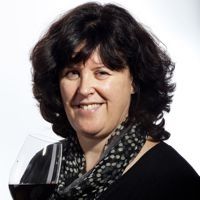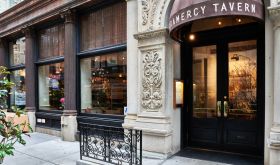Christine Parkinson was a chemical analyst, with dreams of working in astrophysical research, before becoming a chef and then the wine buyer for the initial Hakkasan restaurant when it opened a decade ago off Tottenham Court Road.
Today, her official title is Group Wine Buyer, responsible for the lists at both Hakkasans in London, the outpost in Mumbai due to open in mid-April, and their dim sum restaurant, yauatcha.
That brings a lot of power to her wine-buying elbow. These three London restaurants can serve up to 2,000 customers on a busy day; Hakkasan Mayfair looks set to reach sales of £15 million in its first year (on an investment of £12 million); and wine accounts for a quarter of the group's total sales, an element, she added, that is definitely growing. And as befits someone who came to this role from a scientific background, she brings a notably rigorous approach to her job.
Primarily, she confesses, because something went embarrassingly wrong eight years ago. 'I was taking a prominent wine writer to lunch at Hakkasan. I was fairly proud of the list and the collective wisdom in those days was that most New Zealand Pinot Noirs went very well with Chinese food. There were a few on my list so I chose one of the best. At the end of the meal we just looked at each other and said 'that was a horrible combination'. After that, I knew I had to change how we made our final selection and that every wine had to be tasted with our food.'
10.30 am on Tuesdays is the appointed hour for Parkinson and her three sommeliers, Roberto Loppi, Philippe Moranges and Chino Garcia Hernandez, to put the world's winemakers to the test. As I joined them in the rather gloomy basement of Hakkasan Mayfair, Parkinson was trying to instill a bit of order into a table strewn with bottles and spittoons. There were over two dozen samples to taste and the spittoons had to be off the table by midday when the first customers would arrive.
These included the new vintage of a Jurançon Sec from south-west France that had been so popular it had been on the list since day one; the latest bottling of a Pinot Blanc which they buy under their own label directly from the Cave de Turckheim in Alsace, a great source of good-value wine in Parkinson's view; some Turkish reds, a hangover from when there had been a Hakkasan in Istanbul; an expensive white burgundy, the first bottle of which was oxidised although the second was much better; and a red wine from a small island off Sicily whose particular grape varieties were revealed only when Parkinson went on to her Ipad.
By midday precisely, a cull had left eight wines, four white and four reds, for what Parkinson described as 'their real challenge', although for me it was to prove one of the most awkward eating experiences I have ever faced. But the following two hours were, I came to realise, the aspect of her working life Parkinson most relishes.
'We're going to try all of these wines with 12-14 very different dishes', Parkinson the headmistress explained, handing me what looked to my untutored eye far too like exam papers for comfort. 'If we're happy with how the wines taste with what we eat, then it's down to how strongly each of the sommeliers want them on their list, because they have to sell them, and then price and availability.'
Across the top were headings for the dishes marked mild, savoury, sweet and spicy. Listing the wines down the left-hand side, we then set to with the dishes that followed at a deliberately sedate pace so that we could eat, taste the wine and discuss. Each wine had to secure a minimum of 3 out of 5 to secure its future.
Parkinson and her sommeliers proved far more adept than I was at a slicing the dim sum into eight pieces and then testing them against each wine. And Loppi certainly went out of his way to order dishes that could have minimised any potential pleasure. A vegetable dish with taro and lotus leaf was a tough call for all the wines; the blackened cod was ordered specifically to test all the reds; the stir-fried ostrich with yellow beans and inoke mushrooms was designed to have the same effect on the whites.
The underlying principle, Parkinson explained, was to ensure that wines were listed that she was convinced would not spoil the customers' experience. 'It's much more about that', she added, 'than the label'. And what tasting, travelling and eating around the world have taught me is that when wine and food don't go well together in a Chinese restaurant, then it can be a far more horrible experience than if the same happens with a European meal.'
This principle also led Parkinson to be quite firm with her sommeliers as soon as they mentioned that they liked a particular wine. That, she insisted, was an aspect that had to be completely put to one side. The judgment had to be much more objective.
And the results were quite obvious, even though the first casualty left Parkinson feeling sad. The 2009 Jurançon was not up to scratch and would not be carried forward despite its years of long service. The aged Riesling from Pewsey Vale, Australia, shone through with the duck as did the white burgundy with the cod. The international group round the table enjoyed the red wine made in France by an Australian as much as the wine made in the McLaren Vale, Australia, from Rhône grape varities.
A new vintage of an Italian red also failed to make the grade, forcing Parkinson to comment, 'Two wines off the list at one tasting. That's a bit of a disaster. But then', she added with relish, 'there's always next Tuesday to look forward to'.
Hakkasan, www.w3.hakkasan.com













